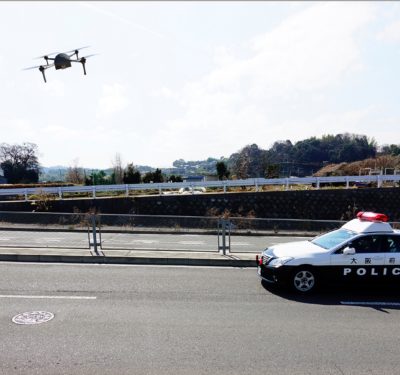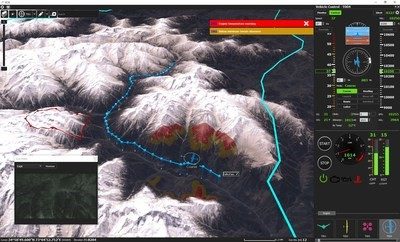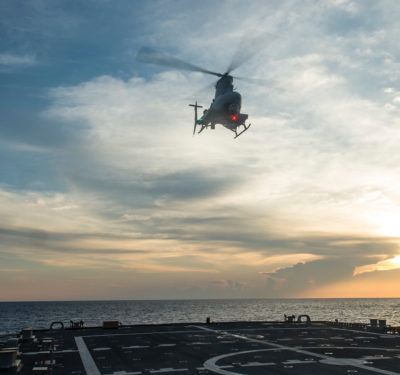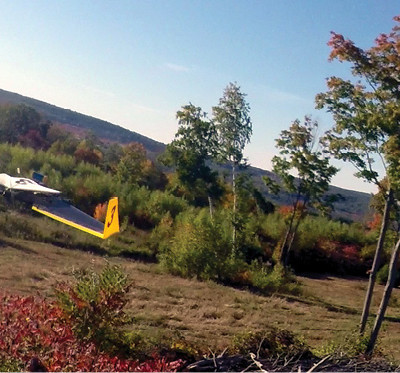
The Federal Aviation Administration on Friday tapped the team led by Mississippi State University to form its new Center of Excellence for Unmanned Aircraft Systems (COE UAS) and help with research critical to integrating drones into the national airspace.
The ASSURE team, more fully known as the Alliance for System Safety of UAS through Research Excellence, has 15 members and is about to add two or three more, said retired Air Force Mjr. Gen. James Poss, the group’s executive director.
Though he declined to identify the potential new members, he told Inside Unmanned Systems that ASSURE was opening discussions with still other universities still aligned with the other three now-disappointed rival teams.
It may truly be a case of the more the merrier since each team member brings expertise and resources. Congress last year appropriated $5 million for the COE; money that is to be matched one-for-one by the coalition. ASSURE’s potential resources, however, are far greater than that. It has 112 corporate members that are each expected to contribute either research money or assistance in kind — like lease time on unmanned aircraft or software licenses, said Poss.
Among those corporate members, he said, are Amazon Prime Air and FedEx, two firms keen on developing drone delivery services.
The COE research areas are expected to evolve over time but are likely to include detect and avoid technology; low-altitude operations safety; control and communications; spectrum management; human factors; compatibility with air traffic control operations; and training and certification of UAS pilots and other crewmembers, in addition to other areas.
COE’s normally have a five-year lifespan, Poss said, but the FAA can extend that if there are still research needs. Most COE’s have quite a lengthy lifespan; 10 years or so, he said.
Poss told Inside Unmanned Systems that his team put together some 50 pages of specific approaches to handling different research topics. One of the things the team wants to do, said Poss, is look at the algorithms for the ground-based sense and avoid radar that the Army is developing in Huntsville to make sure they make sense for civilian use.
The research focus lead for that analysis is the University of North Dakota, said Poss.
“We’ll do the basic research up at North Dakota,” he said, “but then we’ll test it out in realistic scenarios that involve particular commercial market segments.”
Those segments could include precision agriculture and disaster response, wildfires scenario, and maritime gas and oil, he explained.
“Maritime oil and gas, 95 percent of the nation’s offshore oil and gas infrastructure is between the Mississippi and Texas coasts,” said Poss “So we’ll probably be conducting the maritime oil and gas scenario.”
“This world-class, public-private partnership will help us focus on the challenges and opportunities of this cutting-edge technology,” said U.S. Transportation Secretary Anthony Foxx in a statement. “We expect this team will help us to educate and train a cadre of unmanned aircraft professionals well into the future.”
The other 13 current members of the ASSURE team comprise Drexel University; Embry Riddle Aeronautical University; Kansas State University; Kansas University; Montana State University; New Mexico State University; North Carolina State University; Oregon State University; University of Alabama, Huntsville; University of Alaska, Fairbanks; and Wichita State University.
“AUVSI congratulates the Mississippi State University team on its designation and we look forward to working with the university/consortium and the FAA to advance UAS research and development,” said Brian Wynne, president and CEO of the Association for Unmanned Vehicle Systems International in a statement. “It’s critical that we begin looking to the future now and laying the groundwork for more transformational uses of UAS technology, notably beyond-line-of-sight operations.”
“We’ve been working together really hard, said Poss Friday evening, “and we think it really paid off in this selection. We just want to get to work solving these problems for the FAA.”






